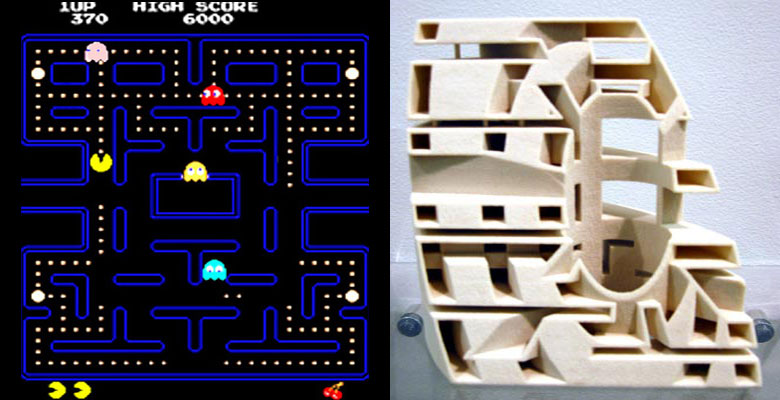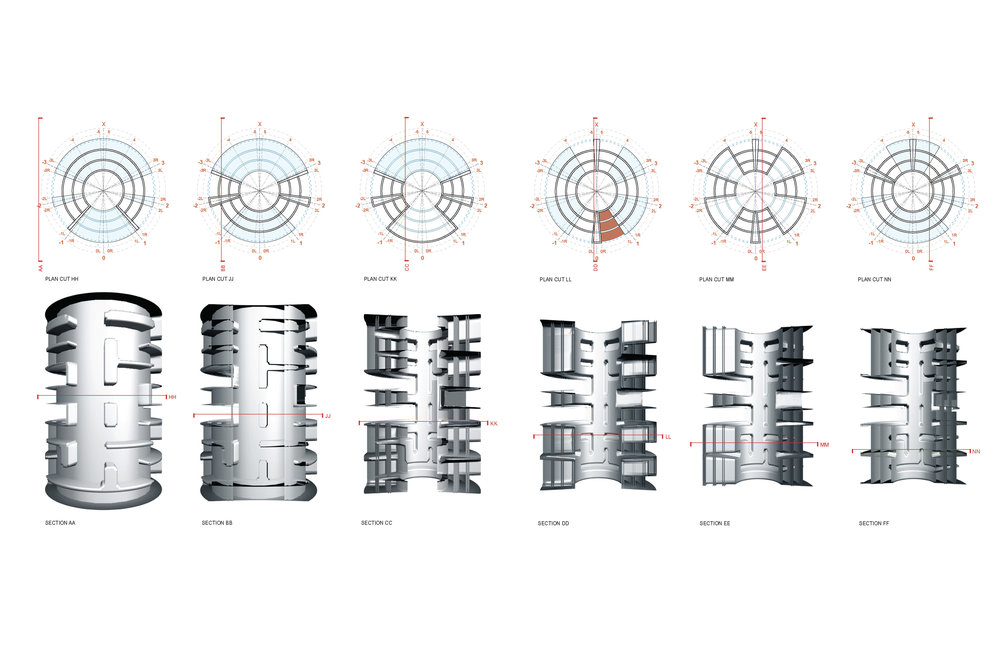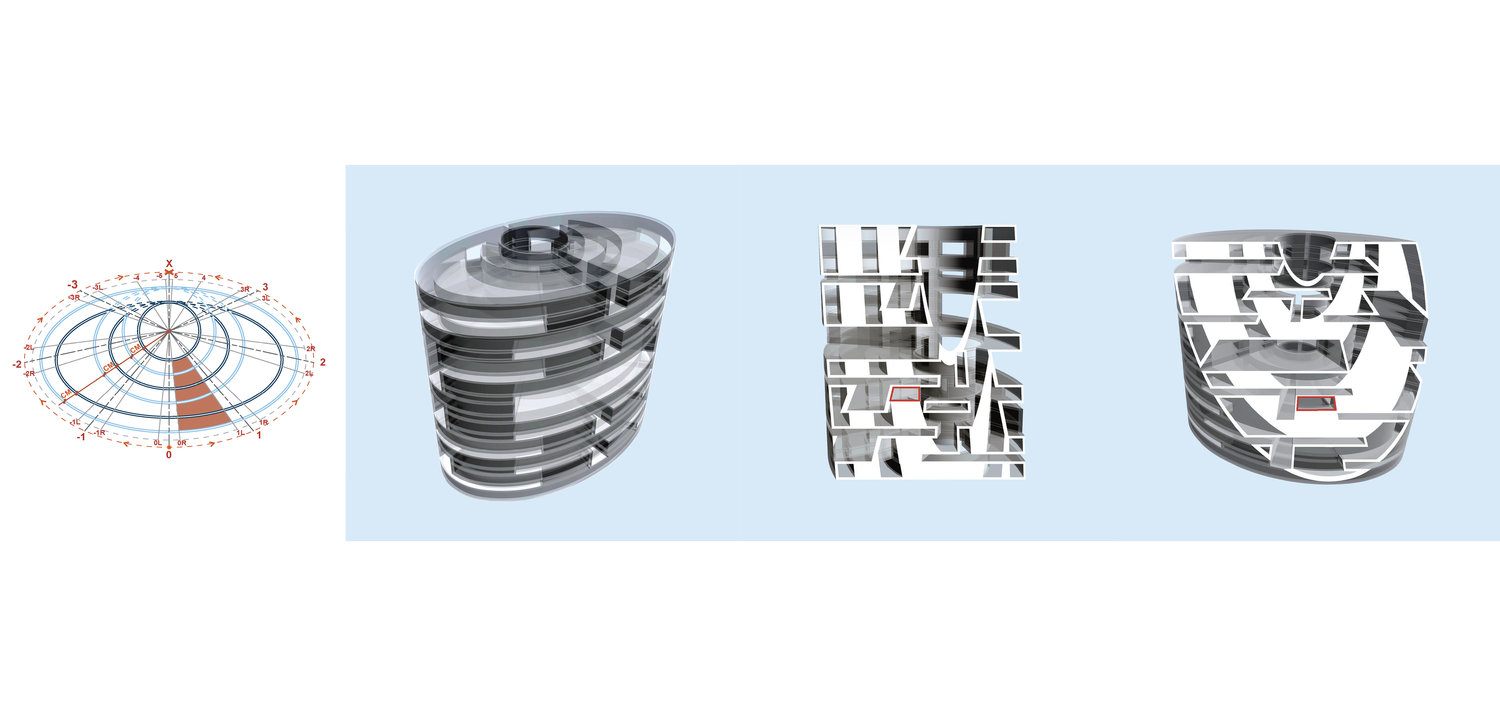





Orthographic projections are the fundamental representational techniques that translate three dimensional space into a two dimensional plane, most commonly appearing as plans or sections. In reading a plan or section, an architect needs at least two or more 2-D projections that suggest and construct a space when combined; one that, regardless of any aesthetic sensibilities and material detail, installs a base level of use, occupancy, and circulation... if not experience.
In PAC-MAN we have just one projection (a plan) and, through the game play and glitches, an understanding of use. Therefore, through a reversal of these two elements, we can reconstruct a possible if unexpected 3-D space for the famous yellow dot and colorful ghosts.
Originally executed as “Up Up Down Down Left Right Left A B B A” at Harvard’s GSD in 2003; awarded the James Templeton Kelley Thesis Prize
In PAC-MAN we have just one projection (a plan) and, through the game play and glitches, an understanding of use. Therefore, through a reversal of these two elements, we can reconstruct a possible if unexpected 3-D space for the famous yellow dot and colorful ghosts.
Originally executed as “Up Up Down Down Left Right Left A B B A” at Harvard’s GSD in 2003; awarded the James Templeton Kelley Thesis Prize